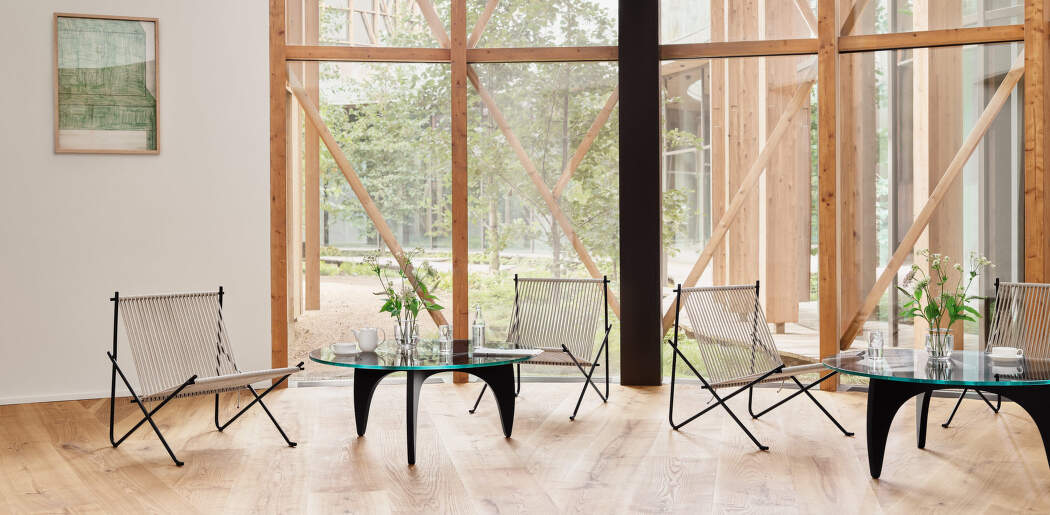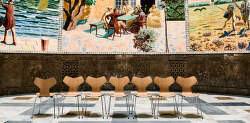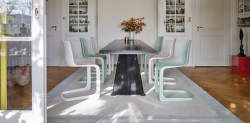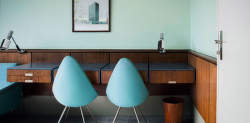Stories do not have to be told solely through words; they may also be experienced in real-life environments. Also, the Hans Christian Andersen Museum of Fairy Tales required it. Kengo Kuma, the architect, included numerous pieces of the renowned Fritz Hansen chairs into the tale. No wonder. The literary giant's life work and legacy are as celebrated in Denmark as Fritz Hansen furniture, which is frequently found in important places. The museum also features Artek furniture by Alvar Aalto.
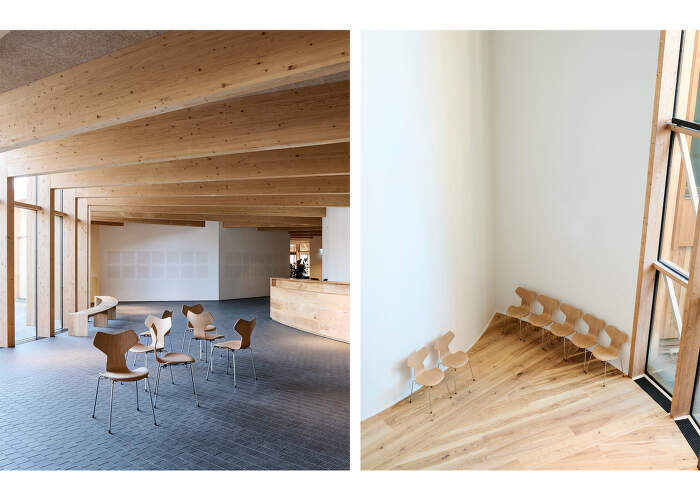
The museum complex is organised without hierarchy as a cluster of elliptical buildings on a meadow bed in the heart of Odense. Paths wind between the buildings, providing not only a connection between the many sites, but also an opportunity to pause and observe the garden, which varies with the seasons. The museum project uses levels above and below ground that are mutually visible. While those above ground receive sunlight, the walkway below is visibly darkened. The architect therefore follows the story of the Little Mermaid, who watched the human world from the depths of the sea.
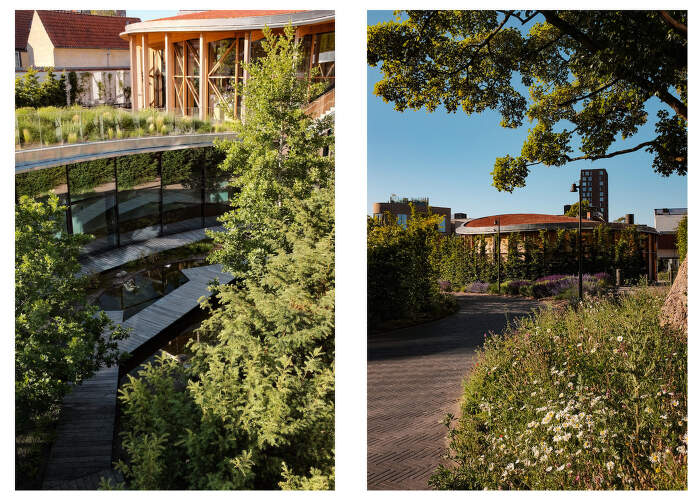
Pieces by Fritz Hansen
Both the Japanese architect's portfolio and Andersen's fascination with nature suggest that the entire complex will be in the same spirit inside and out: very organic with abundant use of wood. These qualities are also nicely matched by Arne Jacobsen's organically shaped design in both the Grand Prix and Ant. While the wooden Grand Prix on a subtle chrome base can be seen mainly in the foyer of the museum, the upholstered Ant chairs in multiple colours provide plenty of comfort in the café overlooking the garden. The smallest version of the Ikebana vase brings a bit of nature inside, highlighting the beauty of each individual stem and flower in accordance with the Japanese art of flower arrangement.
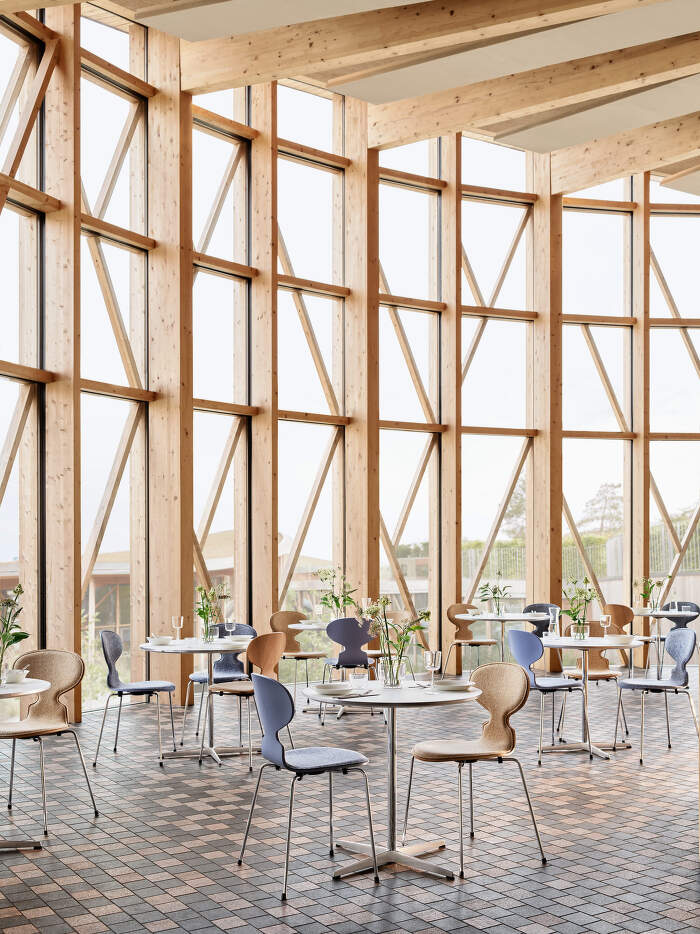
Photo by Rasmus Hjortshøj / COAST
There aren't many pendant lights in the area; Kengo Kuma has strived to highlight the exposed beams as a natural and crafted aspect, and the higher ceilings and glass walls let in plenty of light. In the café, however, you'll find Kaiser Idell pendant lights.
The museum also offers a lounge space where visitors can rest. You can enjoy it in the comfort of furniture designed by another Scandinavian Modernism great, Poul Kjaerholm. The PK4 armchair and the PK60 table are both well-known design icons, and if you're interested, we are more than happy to order them for you.
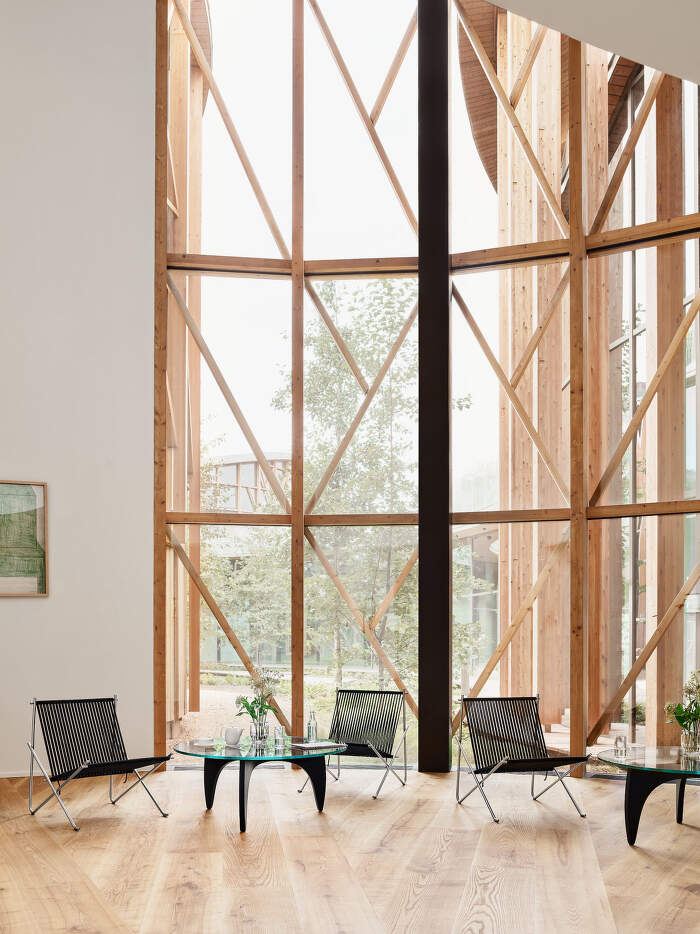
Photo by Rasmus Hjortshøj / COAST
Even more wood with Artek pieces
In another elliptical room lined with wooden frames, you'll also come across pieces designed by Alvar Aalto - the 66 chairs. Their all-wood design fits nicely with the museum's concept, as does their place in design history. If Stool 60 also springs to mind when you think of the 66 chairs, you're not far off the mark. The famous and innovative L-bent leg design made famous by Stool 60 is developed by Chair 66 into a back-back design. Likewise, the tables at which the chairs stand also belong to the Artek portfolio and also build on the stability of the L base.
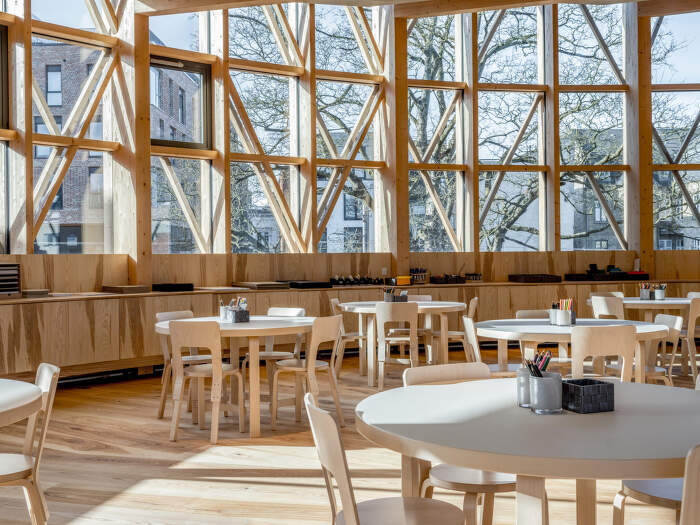
Photo by Rasmus Hjortshøj / COAST
